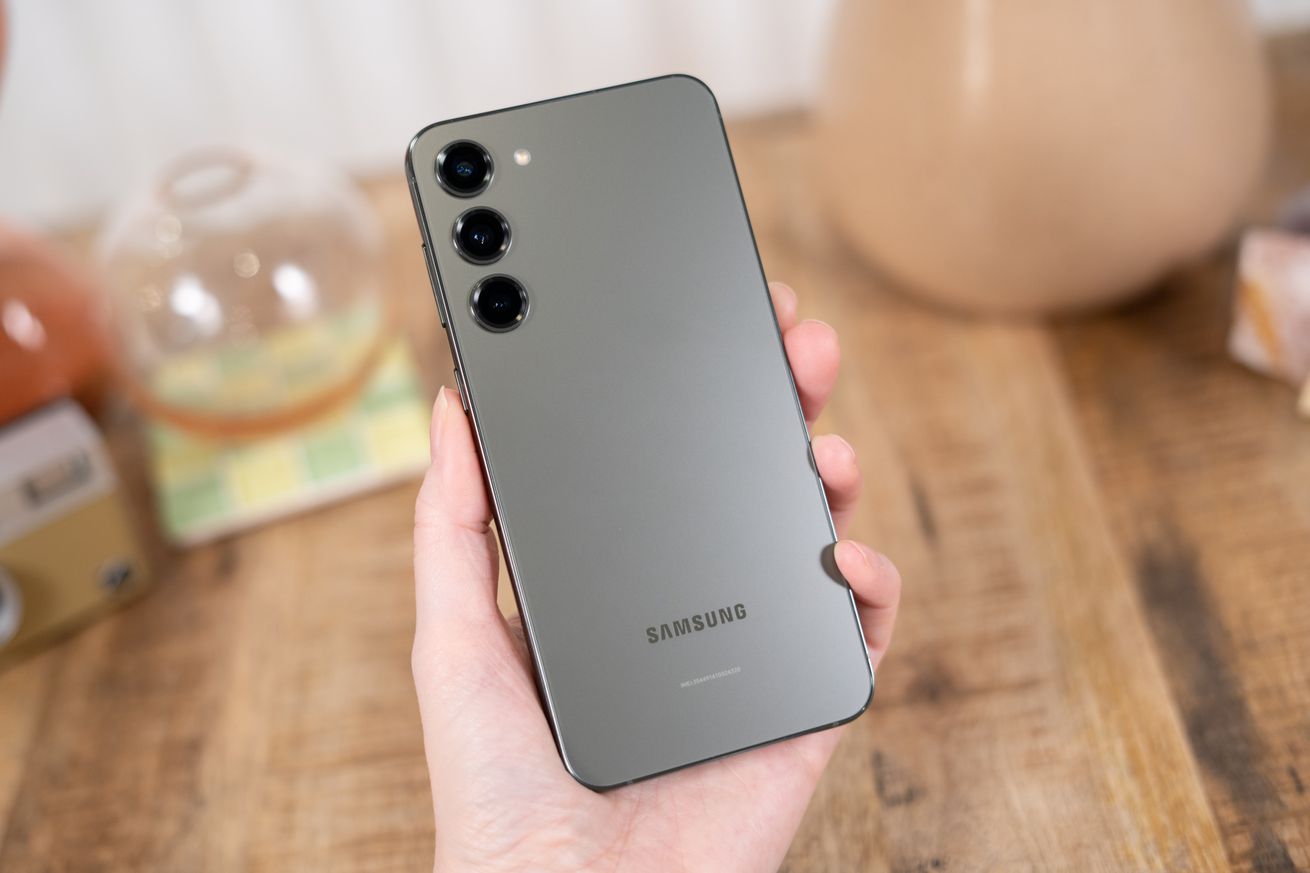
Samsung’s S23 and S23 Plus look a little more Ultra
Samsung’s S-series phones actually look like they belong together this year. The S23 and S23 Plus have adopted the floating camera design of the Ultra, making for a much more cohesive trio this time around. They’re even all available in the same colors.
Under the hood, they have all of the incremental updates we expected, including a Snapdragon 8 Gen 2 chipset (in the US at least), slightly bigger batteries, and updated selfie cameras. Pricing hasn’t budged, either: the Galaxy S23 starts at $799 and the S23 Plus starts at $999. Both are available for preorder today and will ship on February 17th.
Screen size is consistent with last year, too. The S23 Plus’ display measures 6.6 inches, and the S23’s is 6.1 inches (which is empirically the very best screen size). They are still 1080p OLED panels with up to 120Hz refresh rate and are capable of 1,750 nits of peak brightness outdoors. That’s a boost from the 1,300 nits on the S22, bringing it in line with the other two models. Samsung claims its display tone mapping is better this year, adapting to a range of lighting situations as well as boosting visibility in bright light.
Both models get a 200mAh battery boost: the S23 is up to 3,900mAh, and the S23 Plus now comes with a 4,700mAh battery. Battery life was particularly weak on the S22 — and to a lesser degree on the S22 Plus — so the battery gains are good to see. The 8 Gen 2 chipset also claims better battery efficiency, and Samsung says the phones’ vapor cooling chambers are twice as large to keep them running smoothly.
There’s no spec change to the rear cameras — you’ll still get a 50-megapixel stabilized main camera, a 12-megapixel ultrawide, and a 10-megapixel 3x telephoto. Even though the hardware is unchanged, Samsung says that the 8 Gen 2’s updated image signal processor is responsible for some image quality improvements. There’s a new selfie camera across all three models this year: a 12-megapixel sensor with autofocus that now does HDR video at 60fps.
On the exterior, there’s Gorilla Glass Victus 2 for better durability when dropped onto rough surfaces like concrete. The aforementioned contour camera bump is gone, and honestly, good riddance. Let’s just be done with camera bumps entirely. That detail aside, the S23 and S23 Plus feel a lot like their predecessors in-hand. They’re appropriately weighty with sleek aluminum rails. Like the S22 and S22 Plus, the edges are slightly curved — not so much that they slip out of your hand but enough to keep them from looking like an iPhone circa 2013. I like it.
Color options for the S23 and S23 Plus are the same lavender, green, cream, and black as the S23 Ultra. The S23 starts at $799 for 8GB of RAM and 128GB of storage, like last year’s model. However, the S23 Plus gets a base-model storage boost to 256GB (still 8GB of RAM) at the same MSRP as last year: $999. That’s darn nice of Samsung — though it’s a little less generous when you consider that the company removed microSD slots a few years ago. Choose your storage wisely because what you get is what you get.
1/5
The S23 and S23 Plus are surely minor updates over last year’s models, but that’s also been true of Apple’s and Google’s latest devices. And aside from the yearly improvements to battery life and performance, it’s kind of hard to see where Samsung could be doing anything differently. In the US at least, Samsung doesn’t need to do much to stay on top, either. According to Counterpoint Research, Samsung owned roughly the same amount of market share as all other Android OEMs combined in any given quarter in 2022. The status quo seems to be working just fine for Samsung these days.
Photography by Allison Johnson / The Verge

